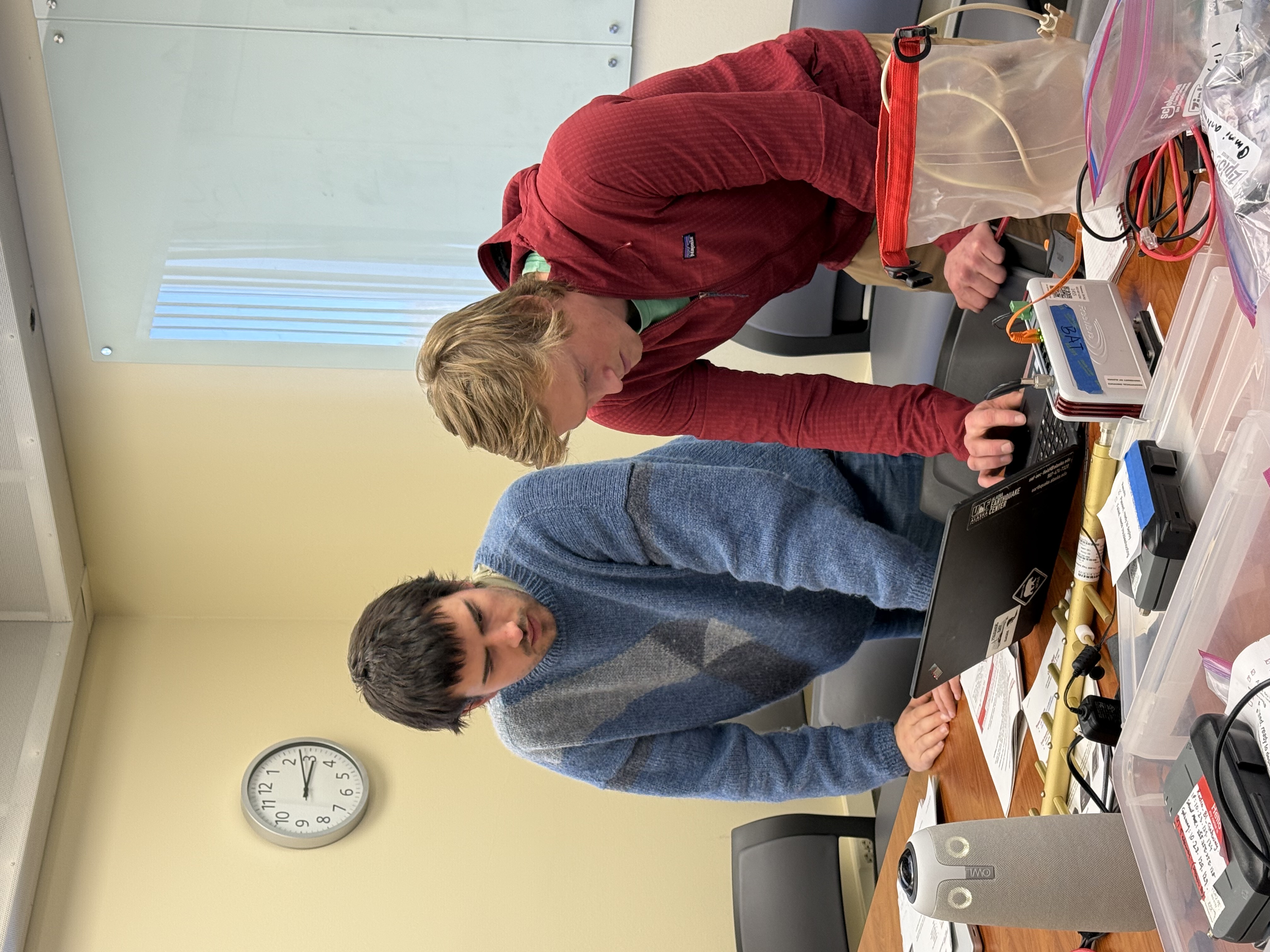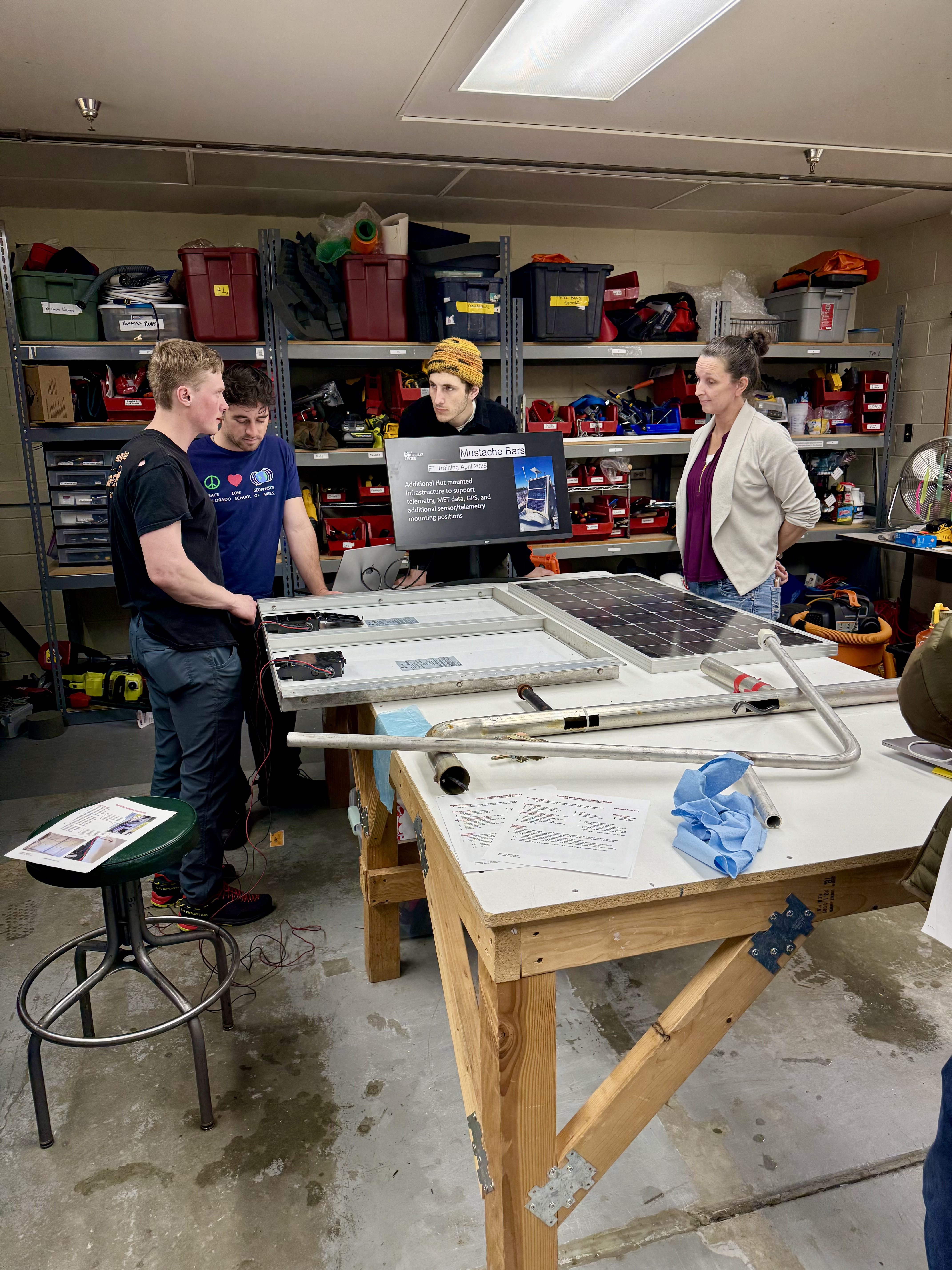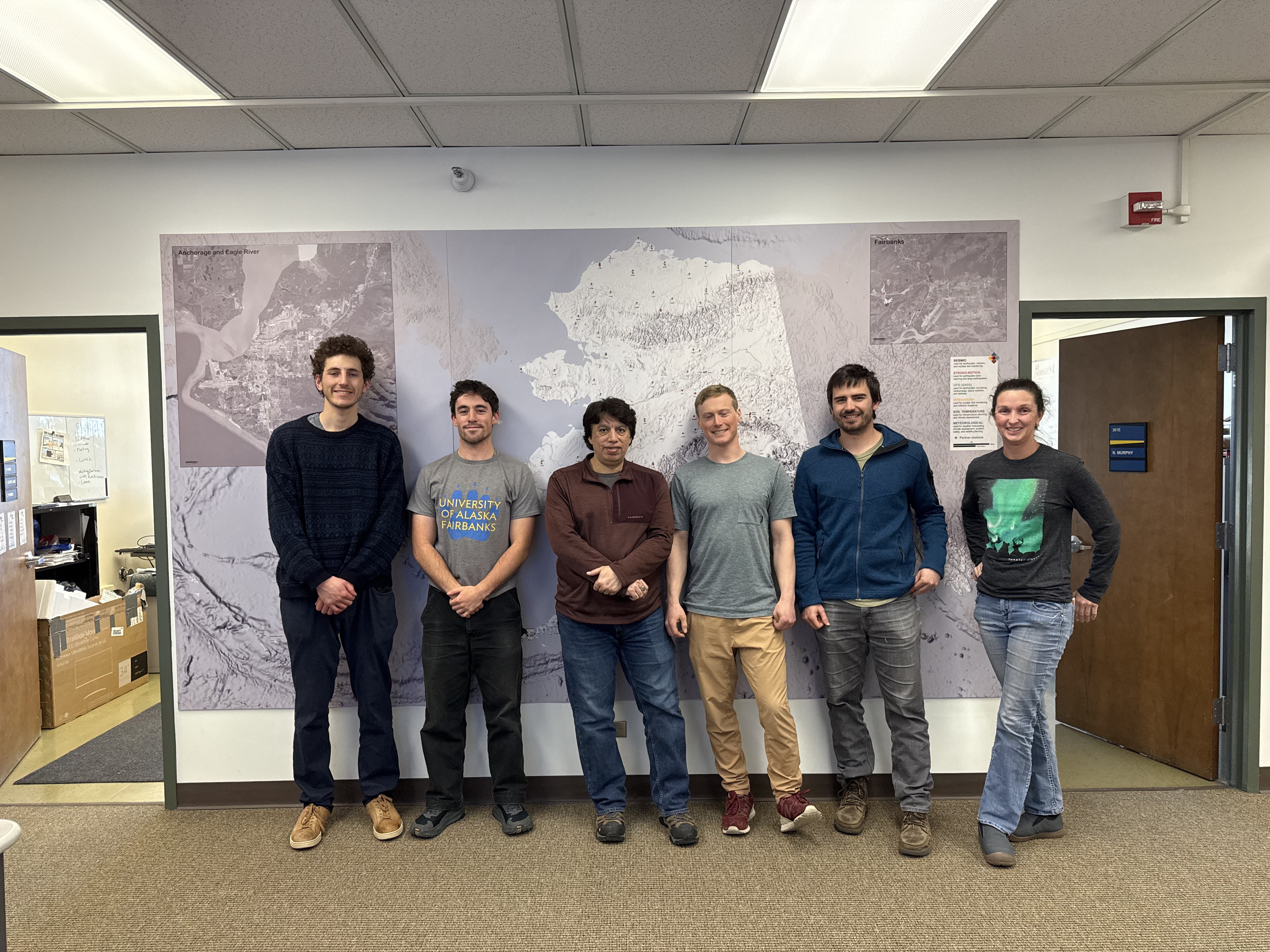



From deep snowfields to mosquito-thick tundras, Alaska Earthquake Center field crew technicians crisscross the state to maintain and upgrade our seismic monitoring network of over 250 stations. From the days that begin to stretch in early April until they fade by late September, our field techs work tirelessly to ensure that data flows continuously throughout Alaska to our analysts and, ultimately, to you.
This season’s focus is to increase the number of existing seismic stations that can operate year-round, enhancing the availability of real-time data. “Our stations can intermittently or completely stop transmitting data due to severe weather, equipment malfunctions, or unexpected wildlife encounters—like squirrels chewing through wires or bears using the station as a scratching post,” says Field Operations Manager Carolyn Parcheta. In the 142 days spanning Alaska’s spring to fall, our field techs aim to visit 70 sites.
Before the techs can head into the field, their first step is to prioritize the seismic stations that require attention. This decision is guided by three key factors: organizational priorities, trouble tickets, and the spatial distribution of stations.
Organizational priorities emphasize servicing stations essential to key grant commitments and ongoing research collaborations. Trouble tickets flag stations through a remote monitoring system that checks on the various components at each site. In addition, we evaluate the spatial distribution of the network to prioritize areas showing low densities of functioning stations.
Once priorities are set, Parcheta dives into organizing “spreadsheets, spreadsheets, and more spreadsheets.” She meticulously tracks everything from budgets to travel logistics to crew schedules to ensure every detail aligns within the constraints of the short field season. With logistics finalized and teams assigned, the training phase kicks off.
Installation and equipment maintenance are key to each station’s ability to serve its role. Our field techs need to know how to install two types of seismic sensors, weather instruments, permafrost probes, GNSS sensors, infrasound detectors, and more. They set up power for the sites with batteries and solar panels, and build out infrastructure components—such as mustache bars and back panels—to support the various sensors and communication systems like internet, radio, and satellite links. Maintaining reliable, real-time transmission of seismic data is a critical part of the mission at the Alaska Earthquake Center.
Due to the complexity and variety of tasks, our team undergoes an intensive four-week training program to prepare for the challenges they may face in the field. “We have limited time and resources to address issues when we are at stations, so these trainings make sure that our team maximizes the time we are out in the field,” explains Field Engineer Ethan Berkeland.
Kicking off April 18 and running through the end of the season, we’ll be highlighting weekly our field crew’s adventures across the state on our social media platforms, @akearthquake. Follow along for glimpses of the impressive work our crew performs, and enjoy some beautiful shots of seismic stations set against Alaska’s breathtaking landscapes.



